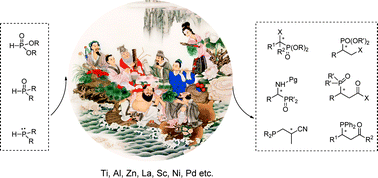Recent developments in metal catalyzed asymmetric addition of phosphorus nucleophiles
Abstract
The metal-catalyzed asymmetric addition of phosphorus nucleophiles is one of the most efficient and reliable approaches for the construction of new carbon–phosphorus bonds. In recent years, great achievements have been made in this area, and many powerful methods have been developed for these transformations with high efficiency, low


 Please wait while we load your content...
Please wait while we load your content...